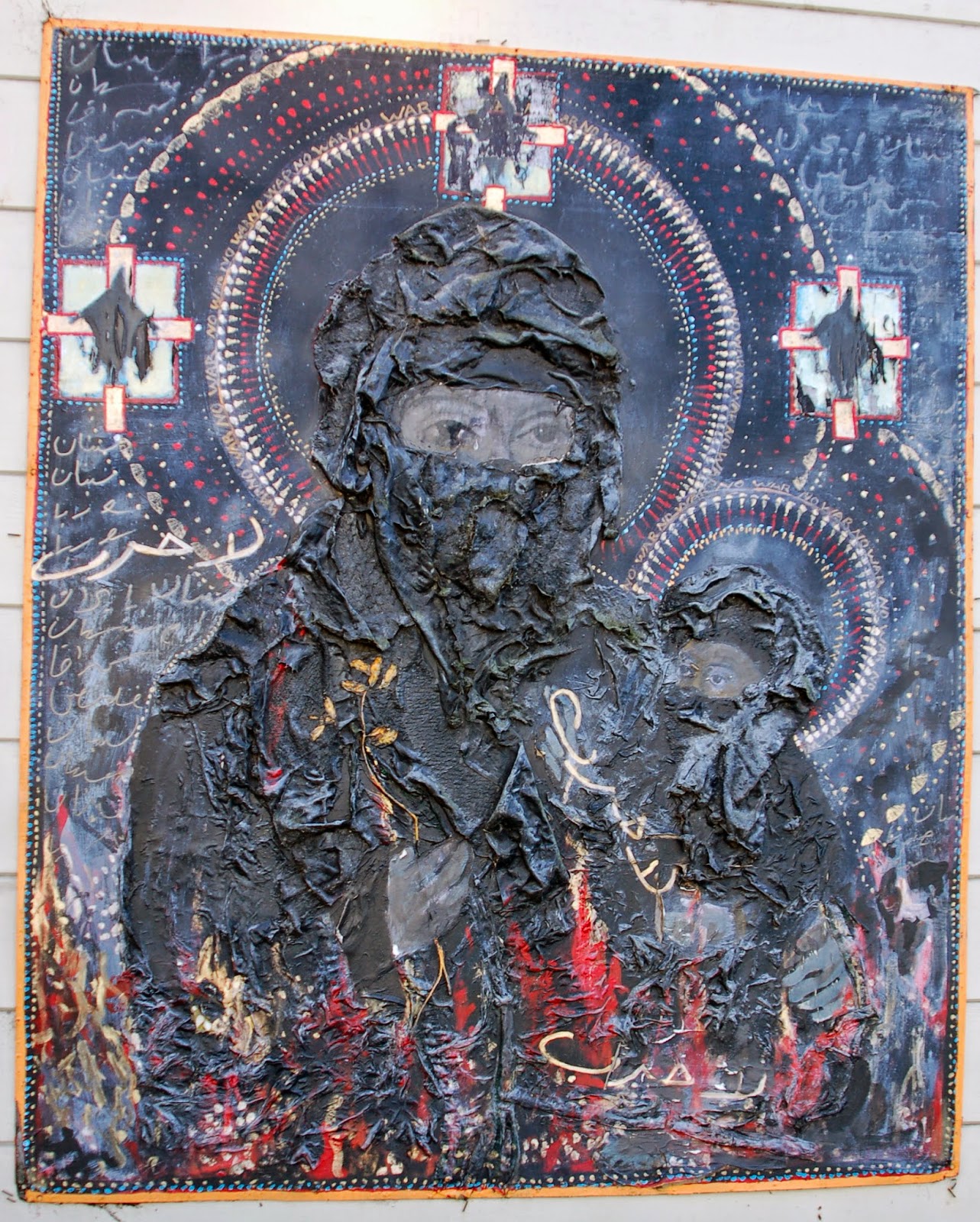What I found most striking about this film was the faces: these people were all white! They were also mostly men.
Hit & Stay: a history of faith and resistance documents the emergence, spread, and gradual disintegration of a one strain amid the broad movement to stop the US war on Vietnam. Over several years in the late 1960s, starting with religiously motivated Catholic priests and nuns, anguished opponents of the US attack on Vietnamese self-determination, did their best to impede the war effort by breaking the conscription system. The Catonsville 9 action, shown in the film, is usually taken as the spark. The early actions may have started as symbolic protest, the sort of thing that we now largely associate with mass nonviolence. But at the trial of the first group, four men who had poured their blood on Baltimore draft files, the government whined that there were no copies of the damaged documents. The film inserts an image of a light bulb snapping on. Subsequent actions became more and more serious about ensuring that the infrastructure that fed the military with cannon fodder would become unable to operate. And they made a dent. The film includes of clip of newscaster Walter Cronkite solemnly announcing that ""the Selective Service system said today that there have been 271 attacks on draft board offices this year."
So who were these people who resisted so actively? Here I'm sharing my own thoughts, informed mostly by own experience of those times as well as subsequent political movements. I have worked closely with one person whose face is in the movie and was acquainted with several others, but only tangentially.
The Roman Catholic protest movement that pointed the way for these actions came out of a social milieu that is hard to imagine now. Today, there are five Catholics sitting on the Supreme Court and many white Catholics are very much entrenched among the middle and upper classes. (Obviously, this is not so true for Latino and immigrant Catholics.) Back then, though the Catholic John F. Kennedy had won the presidency in 1960, most white Catholics were only one generation into the US mainstream, mostly still wage workers, not managers. The World War II mobilization to defeat Nazi Germany and imperial Japan had been a rite of passage that conferred full inclusion in America triumphant on Italian, Irish, Polish and other non-Anglo citizens.
Many Catholics in the resistance to the Vietnam war were the children of that first mainstream generation. Some had their own experience of military service in the draft army. But probably all came from families and social settings where pride in newly affirmed citizenship ran deep and where highly educated critics of society were rare. Seeing their country wage an immoral war was acutely painful to this younger generation, as was the divide they too often felt from the world of many of their older relatives.
The film suggests but does not clearly show this. Perhaps that is too much to ask. One activist, Bob Good, introduces the milieu, explaining how his brother answered his Selective Service call as was expected in the neighborhood:
"you were drafted and you went ..."
His brother was killed in the war at 19 years old. By the end of the film, Good's mother is offering impassioned testimony at the trial of the Camden 28, helping to win jury nullification of the charges against these admitted attackers of government property.
Moral outrage over Vietnam changed individuals and communities. The film uses commentary from a Johns Hopkins University historian, Joel Andreas, to sum up the impact:
... the antiwar movement didn't stop the Vietnam war but it took the people's discontent and turned it into a conscious discontent and that hadn't existed before and it has existed ever since, it never went away.
I reveled in the old footage and untold stories that make up this documentary. It's certainly worth the time of anyone interested in the history of US peace movements.
But I also have some serious quibbles with the way the filmmakers tell their story. Let's start with the title: "Hit & Stay." This refers to the willingness of these nonviolent activists to hang around to be arrested and tried after doing their raids. But very rapidly, the movement turned away from this practice, playing hide and seek with the authorities whenever possible and often completely evading capture. The result was great theater -- why emphasize what these activists mostly did not do?
In the latter stages of this movement, a sub-group including some leaders were charged by the Feds with conspiring to kidnap Henry Kissinger and blow up steam tunnels under Washington. The government got the ammunition for these off-the-wall charges from intercepted communications between Fr. Phil Berrigan while he was locked in a federal prison and the nun he eventually married, Liz McAllister. As Jim Forrest says in the film:
"these were love letters in disguise ... all Liz was trying to do was convince Phil we were still thinking creatively... "
The brave solidarity of their resistance communities -- no one was willing testify before grand juries despite risking jail for maintaining silence -- ensured that the government had no viable case. After years during which many activists lived under threat of long sentences, that set of charges went away.
This episode divided the Catholic part of the movement as some felt they'd been lied to by leaders who had supposedly vowed celibacy. Leading roles in what by then was known as The Resistance more and more moved out of the orbit of the Catholic founders. All of this was complicated at the time and is difficult to tell in a film narrative; though the movie presents aspects of the tale, I am not sure it made them accessible to viewers today. Again, maybe I am asking the impossible. We live in different times.
Finally, the film makers intersperse old footage and contemporary interviews with activists from that time with commentary from people who are more recognizable today. I have no quarrel with included remarks from Amy Goodman of
Democracy Now! or from Noam Chomsky. In fact, I think Chomsky sums up the meaning of all this very well:
... civil disobedience is a tactic .. the point of the tactic is to inspire .. maybe others will do a little more ...
That's seems still true and pertinent.
But I cannot fathom the documentarians' decision to include snippets from
Bill Ayers and
Laura Whitehorn. The segment of the movement that included the nonviolence-inspired resisters who are the subject of this film had very little intersection with the Weathermen; both sets abhorred the war and the system which carried on the slaughter, but they operated in quite different spaces in the broad movement of the times. I cannot see Ayers or Whitehorn as relevant commentators at all
Perhaps their presence here is evidence of a certain incoherence I feel in the film. Did the subject just come to feel so sprawling that the documentarians gave up on shaping their narrative?
***The DVD of the film is available from the film
website and from
Amazon.

















































